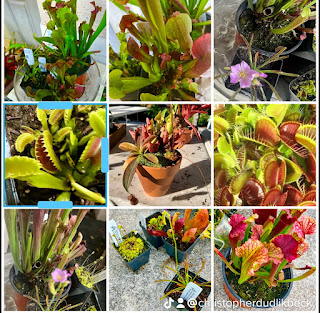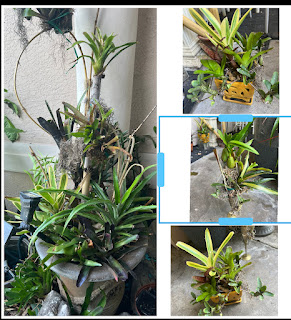The pros and cons of CRISPR Technology and Its Impact on Horticulture.
Introduction(the pros)
CRISPR technology is a new gene-editing tool that has revolutionized the field of horticulture. The technology has made it possible for breeders to create crops with desirable traits, without the need for traditional breeding methods like hybridization or selection. This paper seeks to explore what the new CRISPR technology is, how it works, and its impact on amateur hobbyists interested in horticulture.
What is CRISPR Technology?
CRISPR (Clustered Regularly Interspaced Short Palindromic Repeats) is a genetic tool that enables scientists to make precise cuts in DNA strands. It works by using a guided RNA molecule to identify and cut out specific sequences of DNA. The cut can then be repaired with a new DNA strand, creating a desired genetic change. CRISPR technology is a significant breakthrough because it is more efficient than previous gene editing tools like TALENs and Zinc-finger nucleases. This means that it is possible to edit genes faster, cheaper, and with more precision.
What are the uses of CRISPR technology in horticulture?
CRISPR technology has numerous applications in horticulture. For instance, it can be used to enhance crop yield by creating crops that are resistant to diseases, pests, and drought. It can also improve crop quality by changing the taste, color, and texture of fruits and vegetables. Additionally, CRISPR technology can be used to create new crops that are adapted to specific environmental conditions.
What does the CRISPR technology mean to the amateur hobbyist interested in horticulture?
.
Besides, CRISPR technology makes it possible to create crops that are adapted to local conditions. This means that amateur hobbyists can create crops that are suited to their specific climate zone, soil type, or environmental conditions. This capability allows for greater flexibility in gardening and can lead to more extensive crop choices.
Conclusion
In conclusion, CRISPR technology represents a significant breakthrough in gene editing, and its impact on horticulture is enormous. The technology has made it possible to create crops with desirable traits that are adapted to specific conditions. Hence, amateur hobbyists interested in horticulture can use the technology to create their desired plants, even without extensive scientific expertise. While the technology is still shrouded in controversy, its potential for improving crop yield, quality, and resilience cannot be ignored. Positive
CRISPR technology is a powerful tool that has revolutionized the field of genetic engineering. Although the applications of CRISPR are promising, there are potential risks associated with its use, especially in the hands of amateur hobbyists. There are examples of hobbyists conducting experiments outside of proper facilities with minimal knowledge of the technology, which pose a significant risk to public health and safety. This paper focuses on why amateur hobbyists should not play with CRISPR and the potential consequences of such actions.
But…. Great cautions should be exerted as to the access and use.
The very dangerous cons
Clustered Regularly Interspaced Short Palindromic Repeats (CRISPR) are a set of genetic tools that enable precise editing of DNA. CRISPR technology has already been used in agriculture, medicine, and scientific research. In recent years, the technology has become accessible to amateur hobbyists who can purchase cheap kits online.
Although the availability of CRISPR kits has opened up the potential for more people to experiment with genetic engineering, it has also raised concerns about the potential for misuse of the technology. Amateur hobbyists may not understand the risks and dangers associated with CRISPR technology, which could have serious consequences.
The CRISPR technology has many implications for amateur hobbyists interested in horticulture. For starters, it is now possible for hobbyists to create their desired crop varieties with desirable characteristics like flavor, disease resistance, and size. This means that amateur hobbyists can now create unique fruits and vegetables that are tailored to their specific needs
However
The Potential Consequences of Amateur Hobbyists Using CRISPR are numerous
One of the potential risks of amateur hobbyists using CRISPR is the accidental release of genetically modified organisms (GMOs) into the environment. Hobbyists may not have the facilities, expertise, or knowledge to safely contain the organisms that they are working with, leading to the risk of cross-contamination.
Another potential consequence of hobbyist experimentation with CRISPR is the production of dangerous mutations. Even minor errors in the genetic code can have serious consequences. Hobbyists may lack the knowledge and expertise to identify and mitigate these risks, leading to unintended health consequences.
Finally, the use of CRISPR by amateur hobbyists could lead to an increase in bio-terrorism. It is possible that terrorists could obtain CRISPR kits and use them for malicious purposes, such as creating a virus that would target specific populations.
Conclusion
In conclusion, there are several potential risks associated with amateur hobbyist experimentation with CRISPR. The risks include the accidental release of GMOs into the environment, the production of dangerous mutations, and the possibility of CRISPR being used for malicious purposes. Therefore, it is important to regulate and monitor the use of CRISPR technology, especially by amateur users. Hobbyists should not play with CRISPR until they have proper training, facilities, and safeguards in place to ensure the safety of themselves and others. The bottom line is that genetic engineering is not a job for amateur hobbyists, and the potential risks associated with the use of CRISPR technology cannot be underestimated.


















































